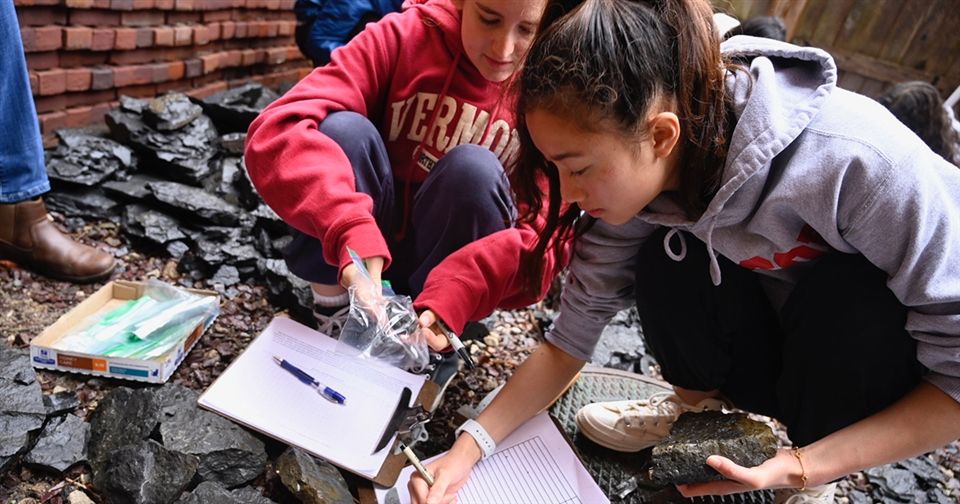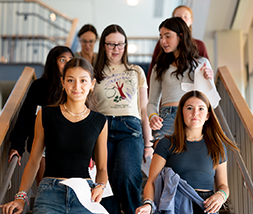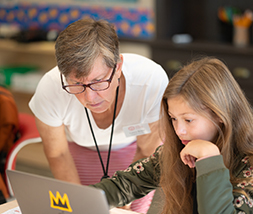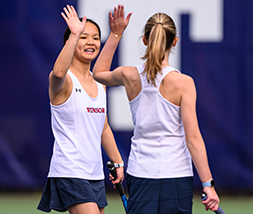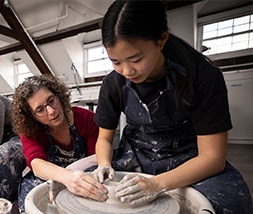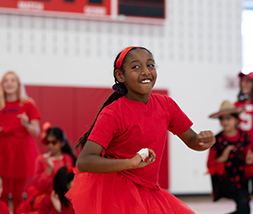April 8, 2022—Eight Winsor students enjoyed an on-campus “field trip” where they collected fossils and met with a visiting female paleontologist. An Upper School elective, paleobiology is taught by Science Faculty and Essential Winsor Science Chair Ken Schopf. The course teaches students how to use fossil data to address questions pertaining to climate change and trends in life’s history—the field trip is a chance for students to see where the data originates
Students collected fossils mined from a large outcrop of rock, identified the organisms, and then used the data to perform a paleoecological analysis of these 350 million-year-old communities. Professor and Associate Chair of Evolutionary Paleoecology and Paleoclimatology Linda Ivany works in the Earth and Environmental Sciences Department at Syracuse University and she joined the field trip to guide students through their paleoecological analysis. Prof. Ivany and Mr. Schopf met in graduate school at Harvard University, where they studied under Stephen Jay Gould—a paleontologist, evolutionary biologist, and historian of science, perhaps best known for his work as an author of popular science.
To kick off the field trip, Prof. Ivany drove a truckload of rock from New York to Boston.
Winsor’s Director of Facilities and Construction John Crompton arranged for facilities staff to be on site to transfer the specimens to an outdoor alcove built just for the occasion. Prof. Ivany even stopped to have a teaching moment with facilities staff and talk about fossils.
Upper School students learned about Prof. Ivany’s research projects before spending time outside collecting specimens. To ensure a representative sample, Prof. Ivany and Mr. Schopf taught specific protocols like using a tool called a ‘collectors curve’ as well as basic hammer safety. Once they’d bagged some samples, students returned to the Science Department wing to identify specimens using Karl A. Wilson’s Field Guide to The Devonian Fossils of New York. “You’re going to have to look three or four times before you decide how to classify it,” Prof. Ivany told the class, “the key is whether there is texture on the sample or not.” Once students dug into the materials, they realized it was a little more complicated than they imagined. “There are so many similarities,” said one student, examining specimens and comparing them to photos in the field guide. “You have to take your best shot,” replied Mr. Shopf.
Students enjoyed an informal lunch where Mr. Schopf moderated questions about Prof. Ivany’s life and research like: What is it like to be a woman in the geosciences? How do you figure out what you’ll work on next? Prof. Ivany also spoke about her time working in Antarctica.
Students ended their field trip by using a program that analyzes samples using a technique called “rarefaction.” This allowed them to determine that their samples came from two statistically different paleocommunities with different ecological structures.
Of course, the paleobiology class didn’t go through all of the specimens Prof. Ivany brought to campus. The rock will be kept at Winsor long term and will be used for many school years to come—an exciting prospect for Lower School students, who study fossils in Class III.
